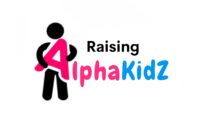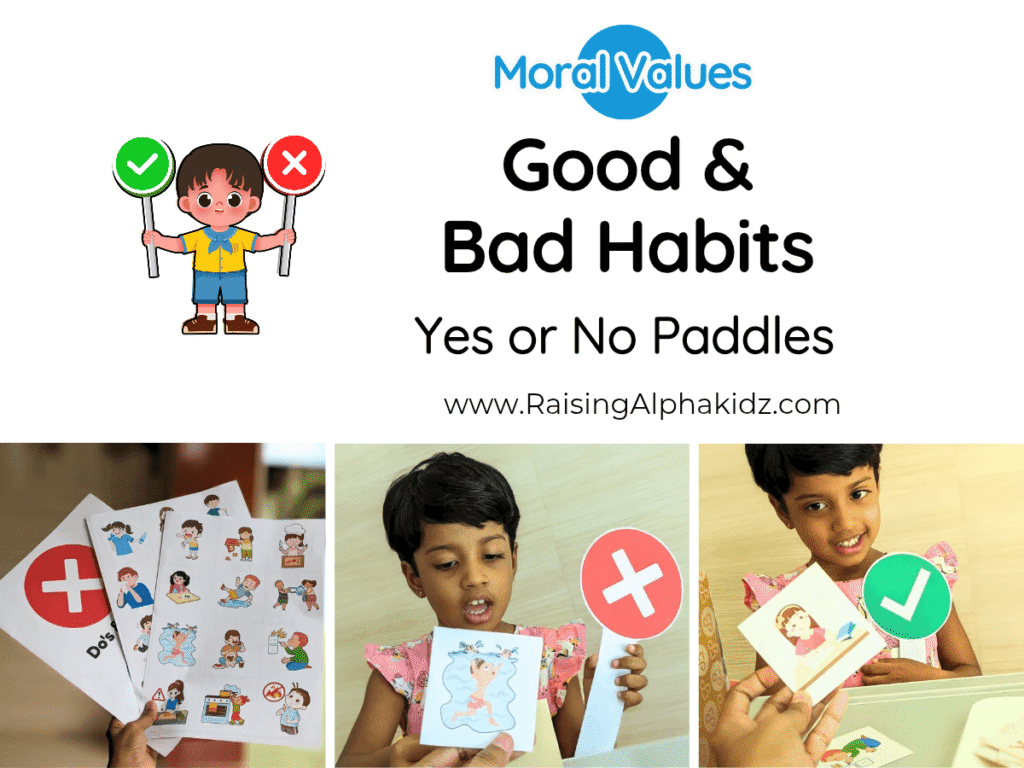Good and Bad Habits for Kids – Fun Learning Activity with Free Printable Habit Cards
Hi parents!
Teaching good and bad habits for kids is one of the most important life lessons — not found in textbooks, but deeply rooted in daily life and routines. Kids tend to do whatever feels fun or exciting in the moment, but it’s our duty to guide them toward habits that support a healthy, safe, and kind lifestyle.
That’s why I’ve come up with a hands-on activity to teach good habits vs bad habits using fun visuals and interaction. This activity uses a free printable set of habit cards and simple “Yes” or “No” paddle signs to help your little one understand right from wrong in a playful way.
What You’ll Need
- Free printable Good and Bad Habits Cards (Download below)
- Printable Yes/No paddle signs (Right ✅ or Wrong ❌)
- Sticker sheets or regular paper
- Cardstock or cardboard
- Scissors & glue
How to Play and Learn Good vs Bad Habits
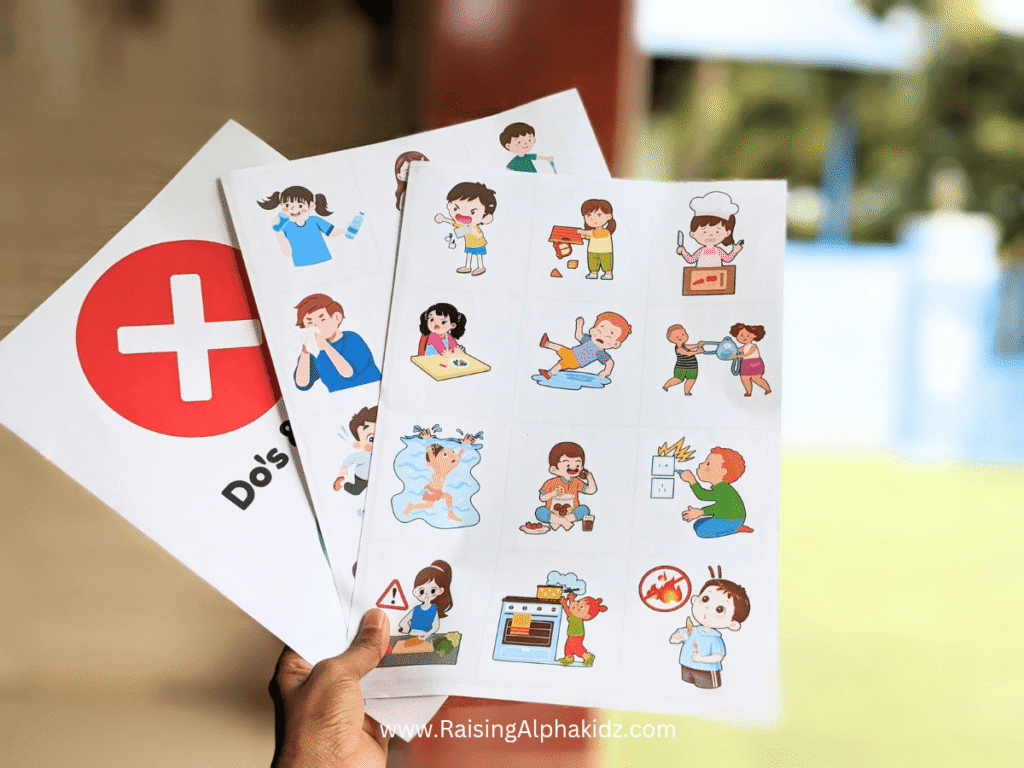
Print the habit cards on sticker sheets and paste them on thick paper or cardboard to make sturdy habit flashcards.
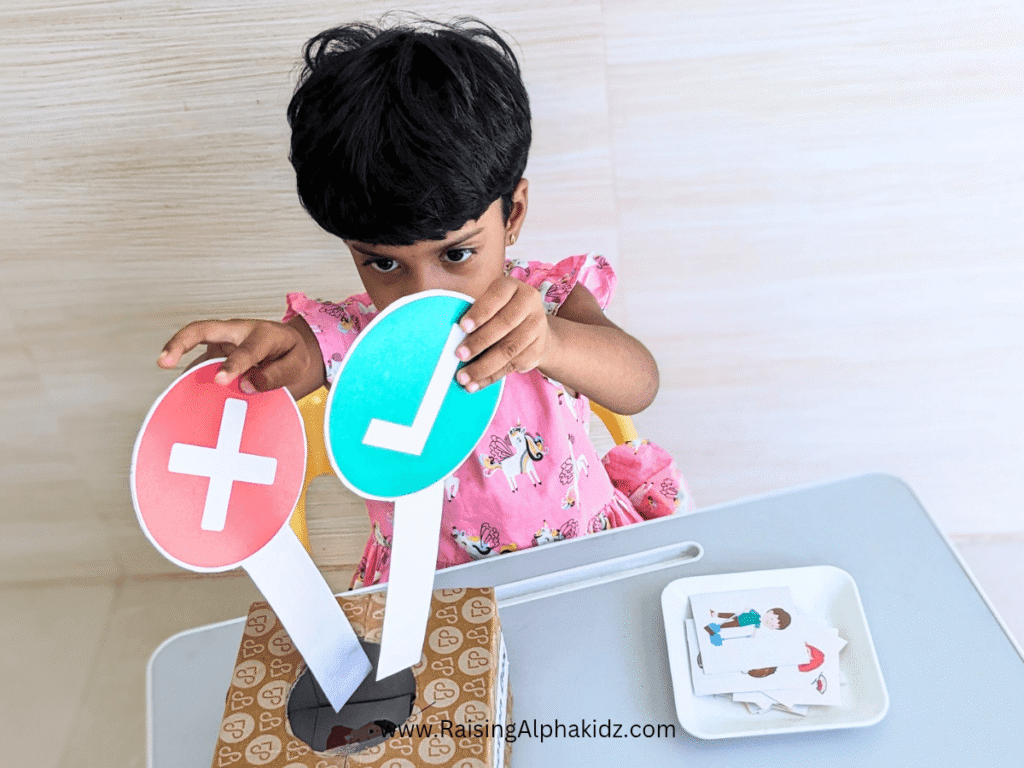
Make two paddle signs using printables — one with a green tick (✅ YES) and the other with a red cross (❌ NO).
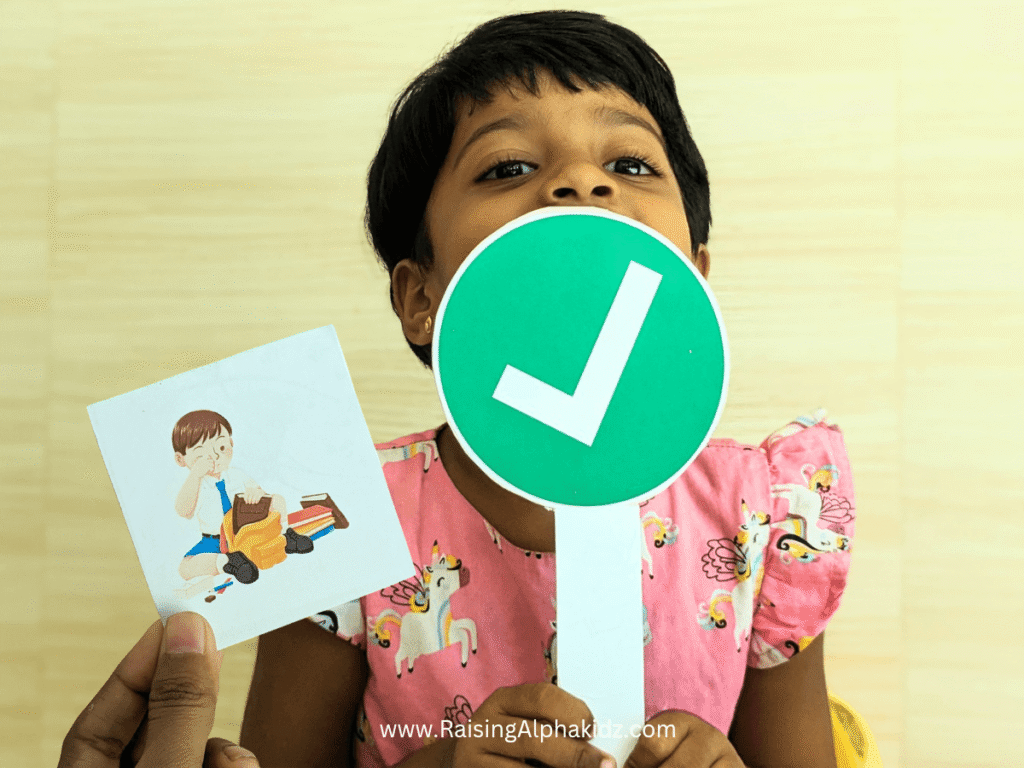
Show each card to your child. Ask them to raise the green paddle for good habits.
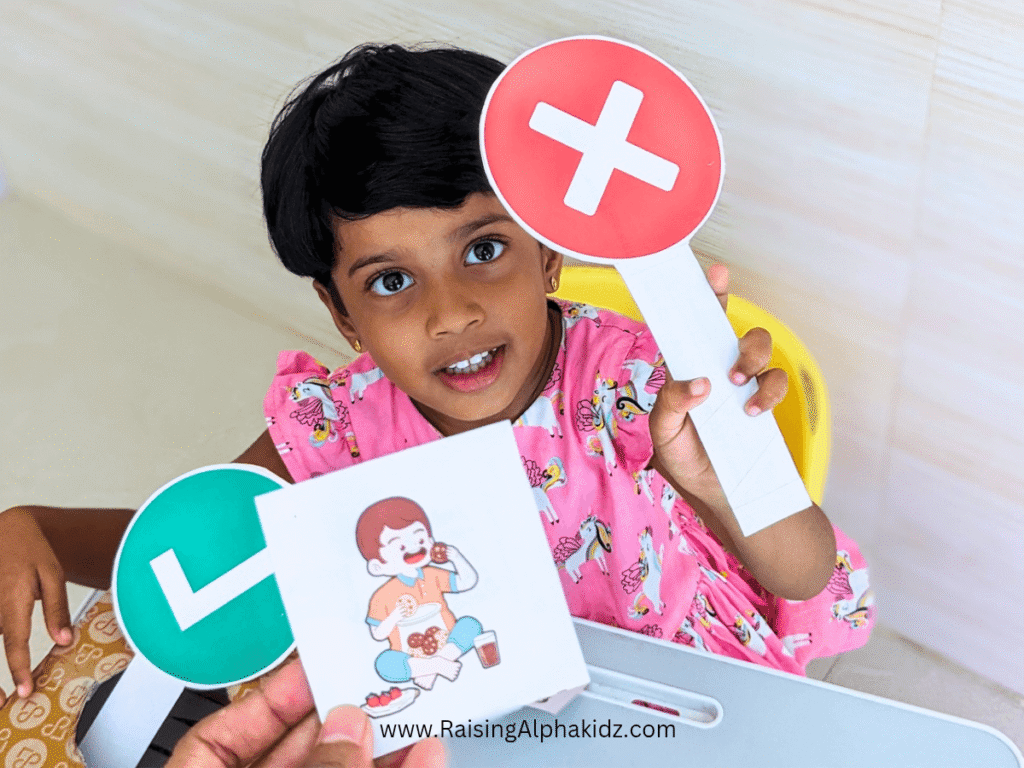
Raise the red paddle for bad habits.
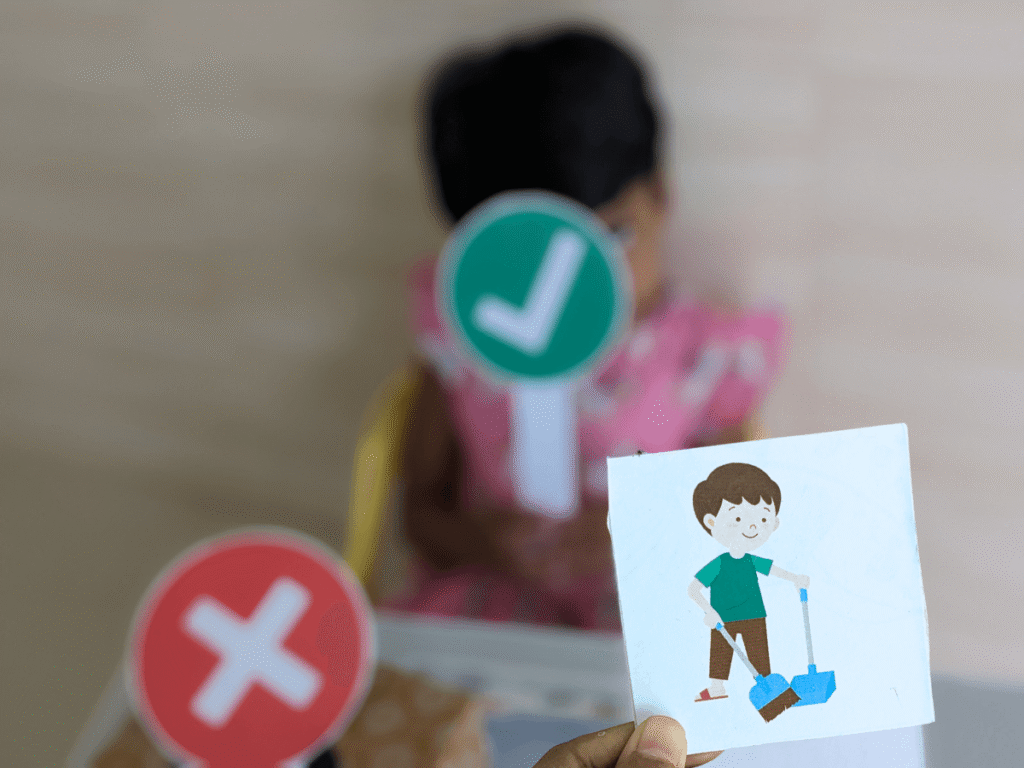
If your child doesn’t understand a card, explain the situation in a simple way to help them build awareness and reasoning skills.

Fun Incident While We Played
One of our bad habit cards shows two kids fighting over a school bag. I flashed the card expecting a quick response. But instead of lifting a paddle, my daughter stared and asked:
“Whose bag is this? Is it the girl’s or the boy’s?”

I couldn’t stop laughing! Her attention wasn’t on the fight but on figuring out ownership logic — a sign of critical thinking and observation.
What did I explain to her?
I said, “No matter whose bag it is, fighting is not the right way to solve it. Talking and sharing is better.”
That moment taught her not just what is wrong — but why it’s wrong.
Science Behind The Scenes
Below are the Science Behind the Scenes (Habits) which makes your kid to understand why we tag some habits as good and others as bad.
Good Habits
| Scene | Science |
|---|---|
| Drinking more water | Drinking water helps your brain think faster and keeps your body cool like an AC from the inside! |
| Washing hands | Washing hands with soap can stop 80% of germs—you’re literally blocking an army of invaders! |
| Sneezing using clothes | Sneezing into your kerchief traps thousands of tiny germs—like a shield stopping invisible missiles! |
| Riding bicycle (physical activity) | Cycling gets your heart pumping and builds happy hormones like endorphins—your body smiles inside! |
| Eating veggies | Carrots help you see better in the dark, and spinach gives your muscles a real boost! |
| Gardening | Touching soil builds immunity—you grow strong while your plants grow tall! |
| Exercise | Just 30 minutes of exercise makes your brain smarter by growing new brain cells like popcorn in your head! |
| Waste management | Recycling one plastic bottle can save enough energy to light a bulb for 6 hours—trash can be treasure! |
| Doing homework | Finishing homework after school helps your brain lock in what you learned, just like pressing the save button on a computer. |
| Keeping things organised | Organized kids find things 10x faster and feel less stressed. It’s like your room is helping your brain! |
| Walking on stairs carefully | Being careful on stairs protects your balance brain, called the cerebellum—it’s like your inner gymnast! |
Bad Habits
| Scene | Science |
|---|---|
| Watching mobile | Too much screen time shrinks your sleep hormone and tires your eyes. Your brain needs a screen break! |
| Keeping things messy | Messy spaces confuse your brain—it uses more energy to focus, like trying to think in a noisy jungle! |
| Cutting with knife | Sharp knives can cut deep nerves, not just skin! Hands need to grow strong and smart first. |
| Avoiding veggies | No veggies = no vitamins! Your body may slow down like a car without fuel. |
| Running on wet floor | Wet floors are sneaky—just one slip and your bones could break faster than a chalk stick! |
| Falling into deep water | Deep water can pull you down with silent strength. Knowing how to swim is your superpower against it! |
| Quarreling over toys | Fighting raises your stress hormone—makes you grumpy and tired, while sharing builds brain-friendly feelings! |
| Playing with plug points | Plug points carry electric storms! One wrong touch can zap your body like lightning! |
| Playing with fire | Fire is a helper in the kitchen, but a dangerous monster in play—it can burn in seconds and leave scars for years! |
| Playing with hot vessels on stove | Hot vessels look harmless but can boil your skin. Heat doesn’t shout—it sneaks up fast! |
What Kids Learn from This Activity
- Difference between good and bad habits
- Early awareness of safety and hygiene
- Development of decision-making and reasoning skills
- Exposure to real-life situations in a simplified way
- Boosts moral values like kindness, respect, cleanliness, and empathy
- Critical thinking – learning to ask questions and reason out actions
More Printable Activities to Try Out
- All About Me Book
- Emotions Matching Cards
- Healthy vs Junk Food Sorting Game
- My Daily Routine Activity Chart
- Safety Rules Picture Cards
Similar Activities To Try Out

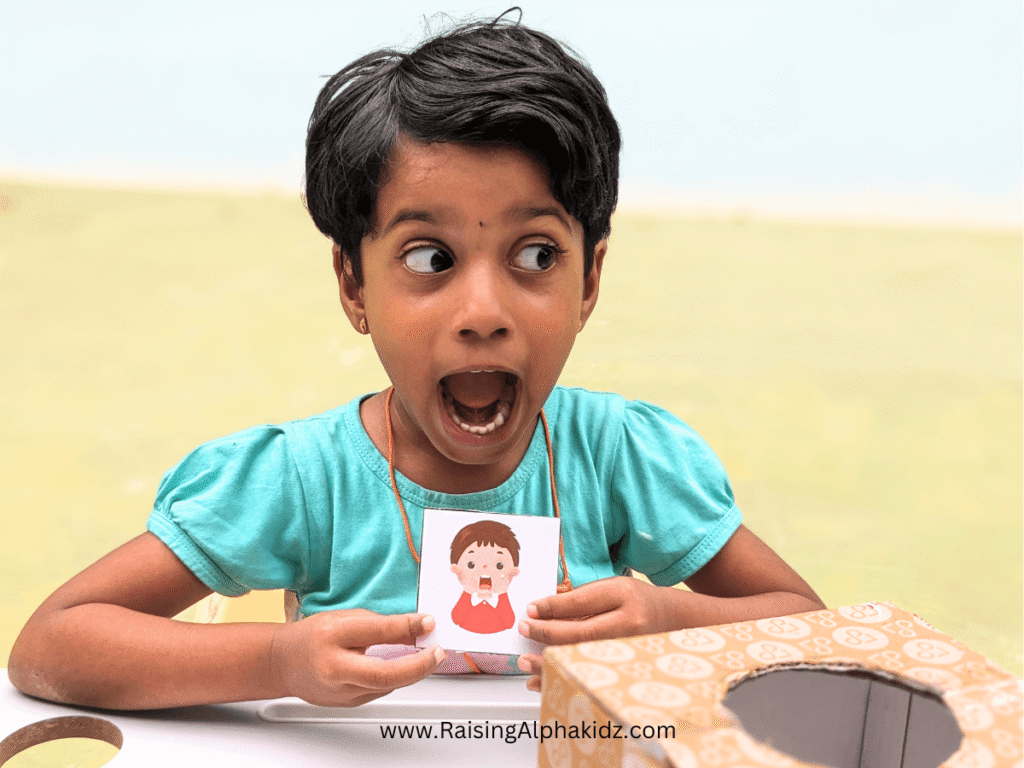
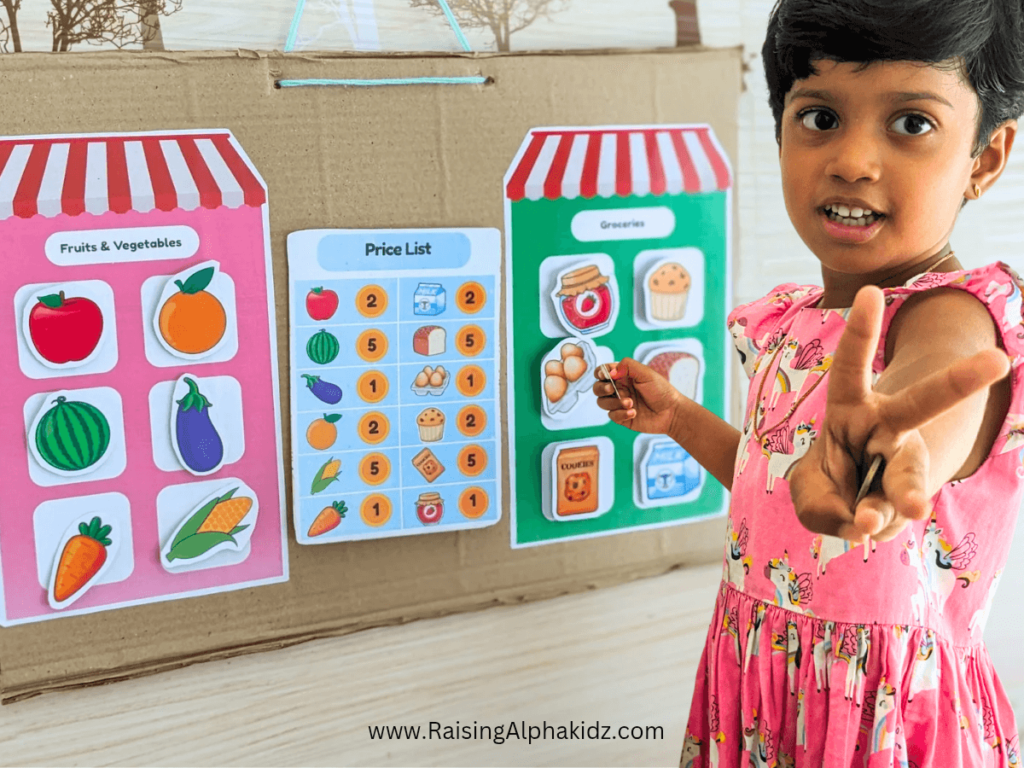
Know More: Life Skills Activity Archive
Download the Free Printable:
Click Download button below to get Good and Bad Habits Cards + Paddle Signs (PDF)
Laminate them if you’d like to reuse them as a classroom circle-time activity or home routine builder.
